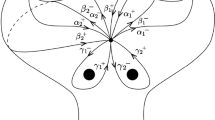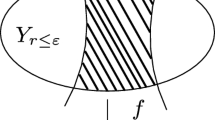Abstract:
We revisit and generalize our previous algebraic construction of the chiral effective action for Conformal Field Theory on higher genus Riemann surfaces. We show that the action functional can be obtained by evaluating a certain Deligne cohomology class over the fundamental class of the underlying topological surface. This Deligne class is constructed by applying a descent procedure with respect to a Čech resolution of any covering map of a Riemann surface. Detailed calculations are presented in the two cases of an ordinary Čech cover, and of the universal covering map, which was used in our previous approach. We also establish a dictionary that allows to use the same formalism for different covering morphisms.
The Deligne cohomology class we obtain depends on a point in the Earle–Eells fibration over the Teichmüller space, and on a smooth coboundary for the Schwarzian cocycle associated to the base-point Riemann surface. From it, we obtain a variational characterization of Hubbard's universal family of projective structures, showing that the locus of critical points for the chiral action under fiberwise variation along the Earle–Eells fibration is naturally identified with the universal projective structure.
Similar content being viewed by others
Author information
Authors and Affiliations
Additional information
Received: 29 June 2000 / Accepted: 16 January 2002
Rights and permissions
About this article
Cite this article
Aldrovandi, E., Takhtajan, L. Generating Functional in CFT on Riemann Surfaces II: Homological Aspects. Commun. Math. Phys. 227, 303–348 (2002). https://doi.org/10.1007/s002200200644
Issue Date:
DOI: https://doi.org/10.1007/s002200200644




